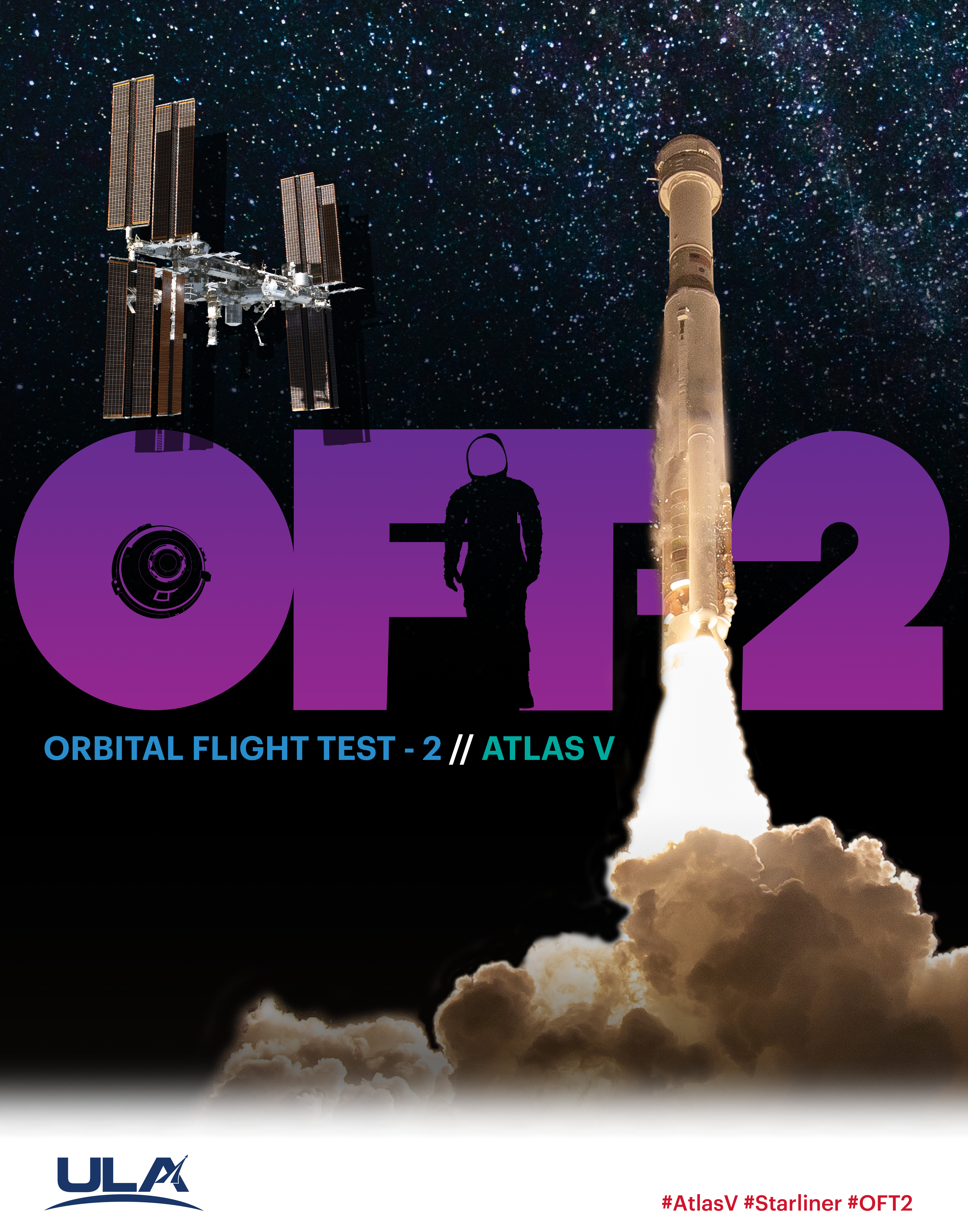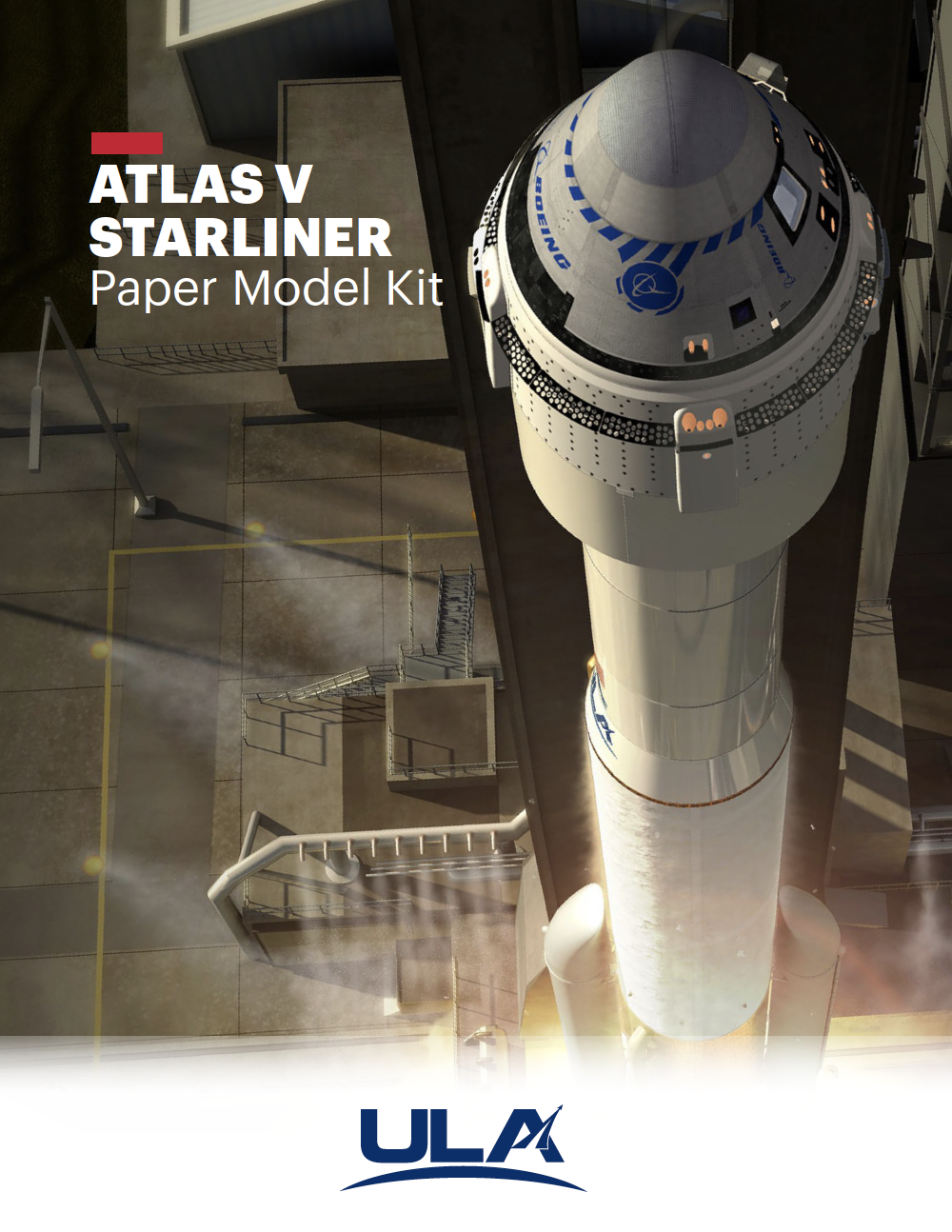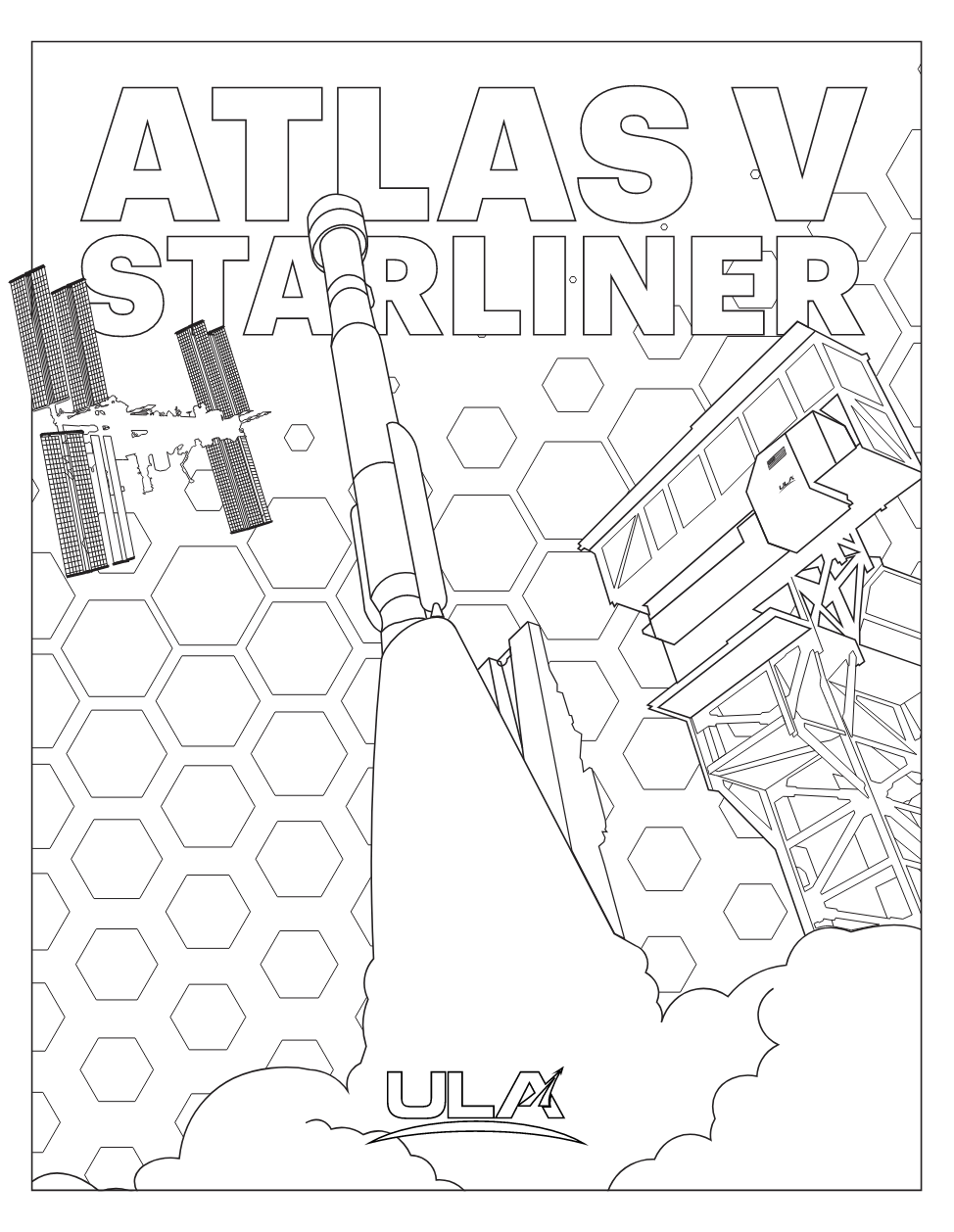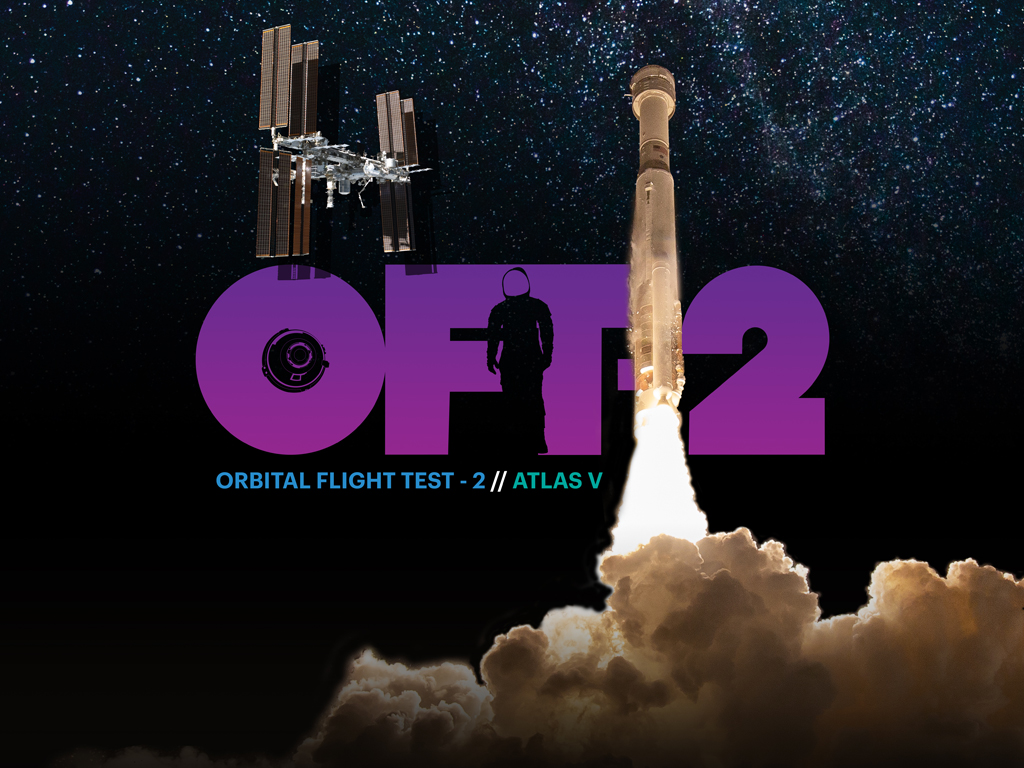Atlas V Successfully Launches Starliner OFT-2
A United Launch Alliance (ULA) Atlas V rocket launched Boeing's Crew
Space Transportation (CST)-100 Starliner spacecraft on its Orbital
Flight Test-2 (OFT-2) to the International Space Station. OFT-2 is
the second uncrewed flight of the Starliner that will demonstrate the
spacecraft's human transportation capabilities. This test flight is the
last major step before the Atlas V and Boeing's Starliner capsule take
American astronauts to the International Space Station as part of NASA's
Commercial Crew Program.
Launch Date and Time: Thursday, May 19, 2022 at 6:54 p.m. EDT (2254 UTC)
Go Atlas! Go Centaur! Go Starliner!
Launch Webcast
Webcast begins May 19 at 6 p.m. EDT (2200 UTC)
Live updates
To keep up to speed with updates to the launch countdown, dial the ULA launch hotline at 1-877-852-4321.
Join the conversation at Twitter, Facebook, Instagram and
LinkedIn
#AtlasV #Starliner #OFT2
Mission Overview
United Launch Alliance (ULA) Atlas V rocket will deliver Boeing’s CST-100 Starliner spacecraft to a 98-nautical mile (nmi) sub-orbital trajectory on its second Orbital Flight Test (OFT-2). Following separation from Atlas V, Starliner engines will burn taking it the rest of the way to orbit and on to the International Space Station (ISS). Liftoff will occur from Space Launch Complex-41 at Cape Canaveral Space Force Station, Florida.
Part of NASA’s Commercial Crew Program (CCP), the uncrewed OFT is the second launch of the CST-100 Starliner. The second uncrewed test flight will demonstrate end-to-end performance of the Atlas V rocket and Starliner spacecraft, including performance of the guidance, navigation and control systems, ground systems and operations teams, as well as on-orbit, docking, re-entry and landing operations. Starliner will land at one of five designated sites in the western United States.
All human launch systems, going back to the Mercury Atlas, traditionally conduct uncrewed test flights prior to crewed flights. The uncrewed flight will allow the team to thoroughly evaluate all flight data against pre-flight predictions and make any necessary adjustments prior to flying astronauts.
Launch Vehicle
Spacecraft
Modified specifically for the Boeing CST-100 Starliner spacecraft, the Atlas V Starliner configuration does not include a payload fairing. Instead, the Starliner’s insulated surfaces take the place of the fairing to protect the uncrewed spacecraft
during ascent. The vehicle’s height with the Boeing CST-100 Starliner is approximately 172 ft (52.4 meters).
The CST-100 Starliner is attached to the Atlas V using a launch vehicle adapter (LVA), which also includes an aeroskirt to
reduce the aerodynamic loads on the vehicle. The aeroskirt is jettisoned for improved performance following booster stage separation.
Centaur
The Centaur second stage is 10 ft (3 meters) in diameter and 41.5 ft (12.6 meters) in length. Its propellant tanks are pressure-stabilized and constructed of corrosion-resistant stainless steel. Centaur is a cryogenic vehicle, fueled with liquid hydrogen and liquid oxygen. The Atlas V configuration for this mission is powered by dual RL10A-4-2 engines, each producing 22,600 lbs (100.5 kilo-Newtons) of thrust. The cryogenic tanks are insulated with a combination of helium-purged blankets, radiation shields and spray-on foam insulation (SOFI). The Centaur forward adapter (CFA) provides structural mountings for the fault-tolerant avionics system and electrical interfaces with the spacecraft. The Centaur also includes an Emergency Detection System (EDS) that monitors for critical hazards to detect an imminent or occurring failure. The EDS also provides critical in-flight data which supports jettison of the ascent cover and initiates CST-100 Starliner spacecraft separation.
Booster
The booster is 12.5 ft (3.81 meters) in diameter and 106.5 ft (32.4 meters) in length. The booster’s tanks are structurally rigid and constructed of isogrid aluminum barrels, spun-formed aluminum domes and intertank skirts. Booster propulsion is provided by the RD-180 engine system (a single engine with two thrust chambers). The RD-180 burns RP-1 (Rocket Propellant-1 or highly purified kerosene) and liquid oxygen and delivers 860,200 lbs (3.83 mega-Newtons) of thrust at sea level. Two solid rocket boosters (SRBs) generate the additional power required at liftoff, with each SRB providing 348,500 lbs (1.55 mega-Newtons) of thrust. The Centaur avionics system provides guidance, flight control and vehicle sequencing functions during the booster and Centaur phases of flight.
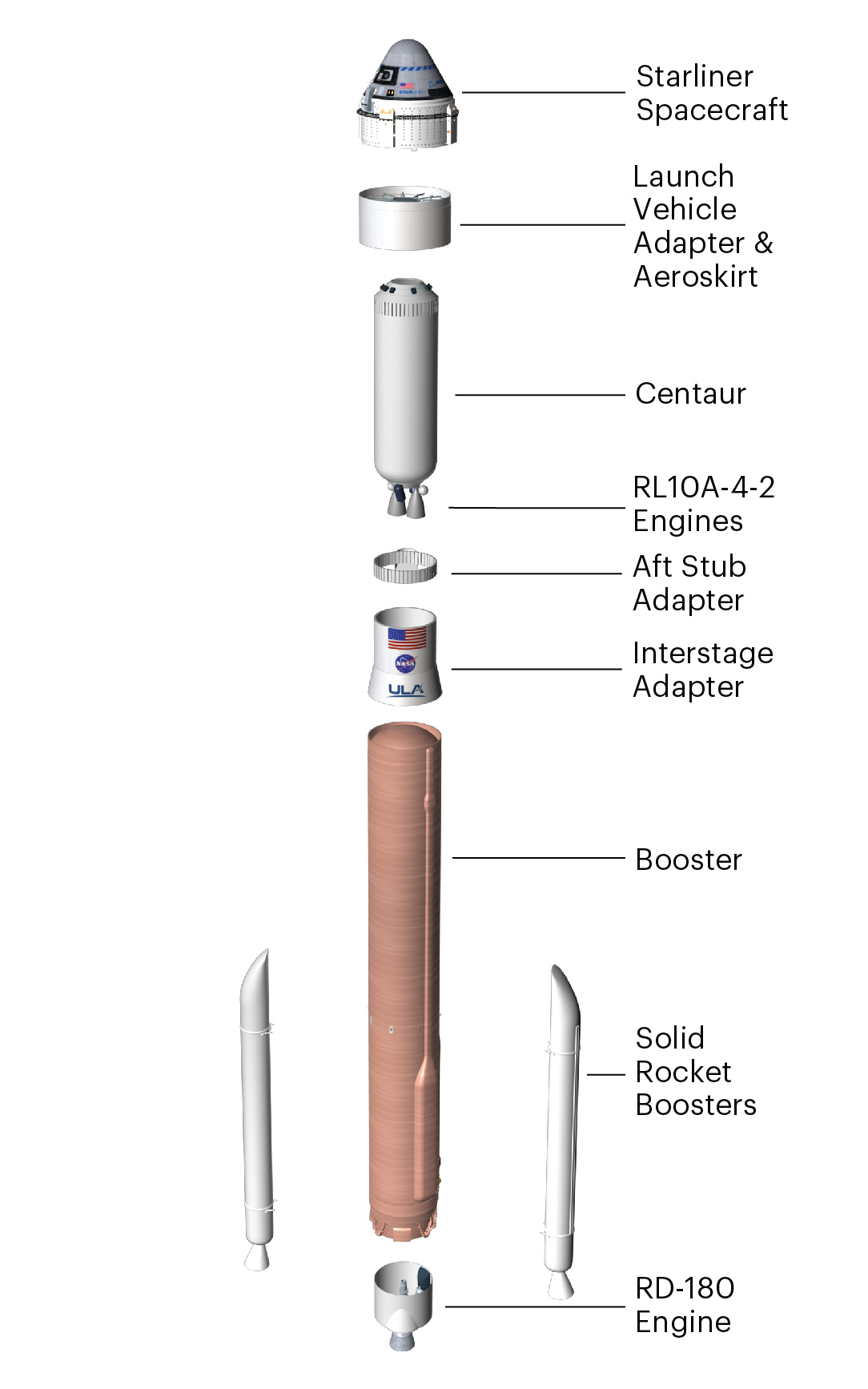
Flight Profile
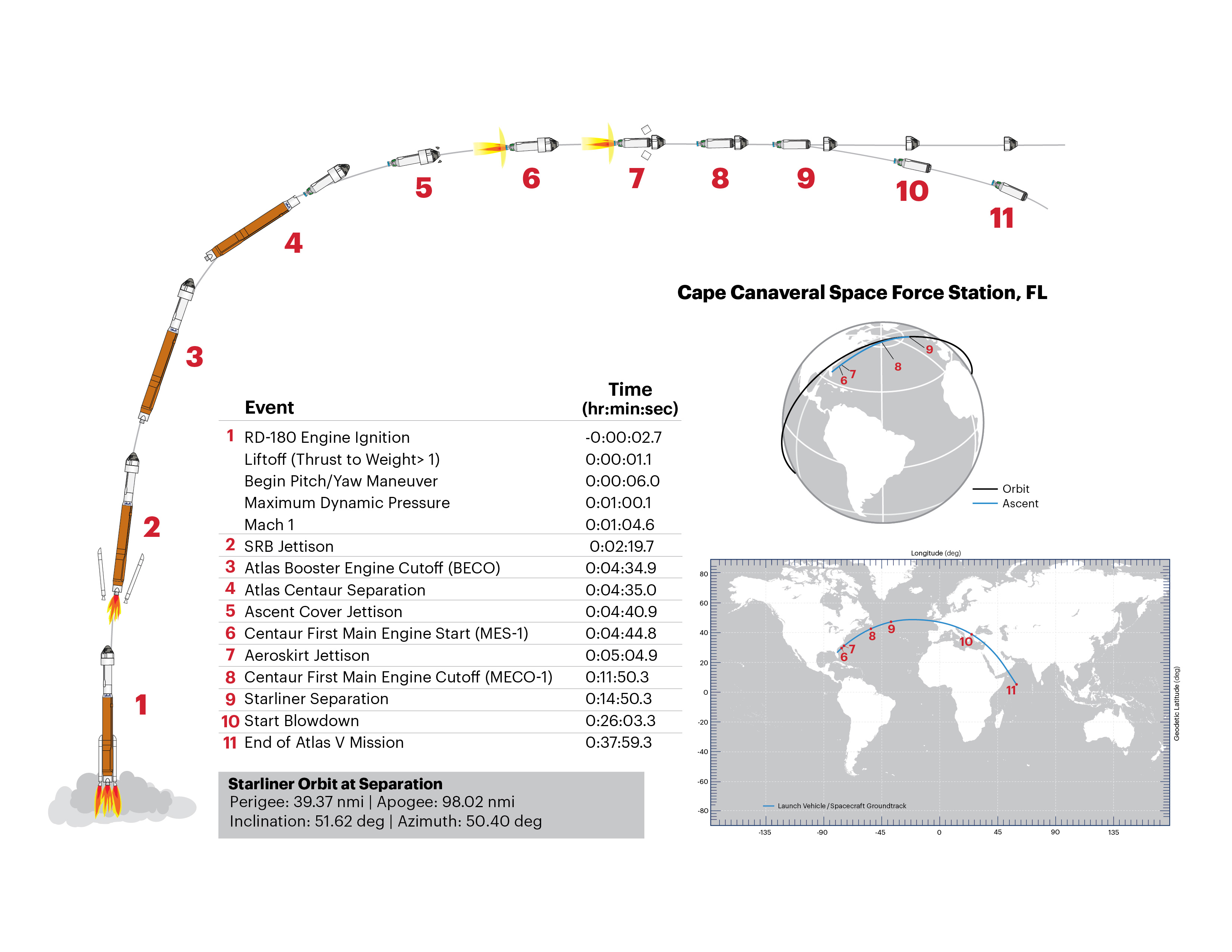
Space Launch Complex-41 // Processing
Space Launch Complex-41, the East Coast home of the Atlas V rocket at Cape Canaveral Space Force Station in Florida, employs a “clean pad” concept of operations to ready launch vehicles and payloads for ascent into space. The rocket elements are assembled atop a Mobile Launch Platform inside the Vertical Integration Facility (VIF) located adjacent to the launch pad. The platform and fully stacked Atlas V then travel by rail approximately 1,800 feet northward from the VIF to the pad for the final countdown, fueling and liftoff. Complex 41 was constructed by the U.S. Air Force in the 1960s for the Titan rocket program. The site was rejuvenated in support of the Atlas V starting in the late 1990s.
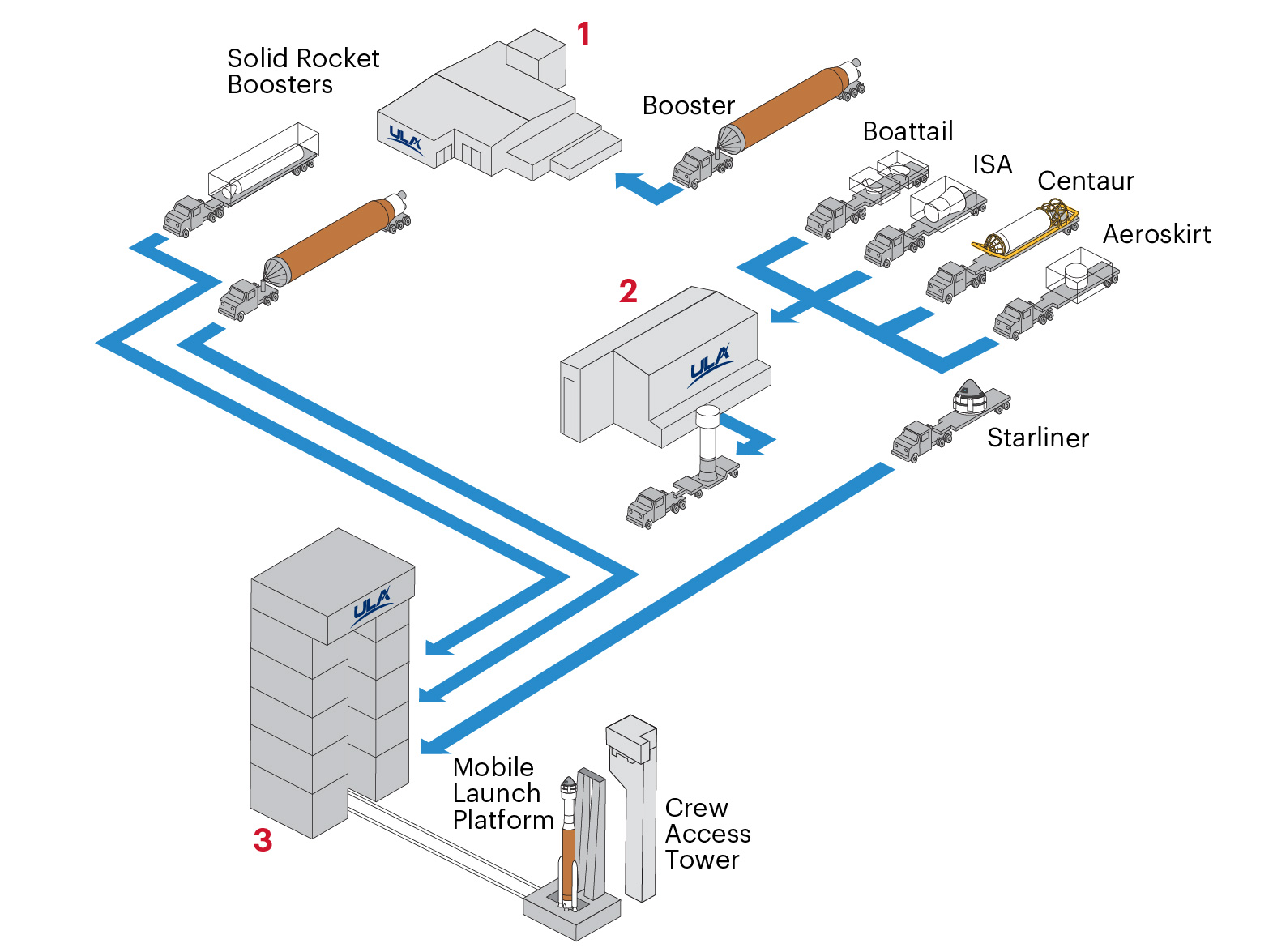
1. Atlas Spaceflight Operations Center (ASOC)
Launch Control Center &
Mission Director’s Center
2. Delta Operations Center (DOC)
ISA, Centaur, Boattail &
Aeroskirt Vertical Integration
3. Vertical Integration Facility
Launch
Vehicle Integration &
Testing, Spacecraft Mate &
Integrated Operations
Production
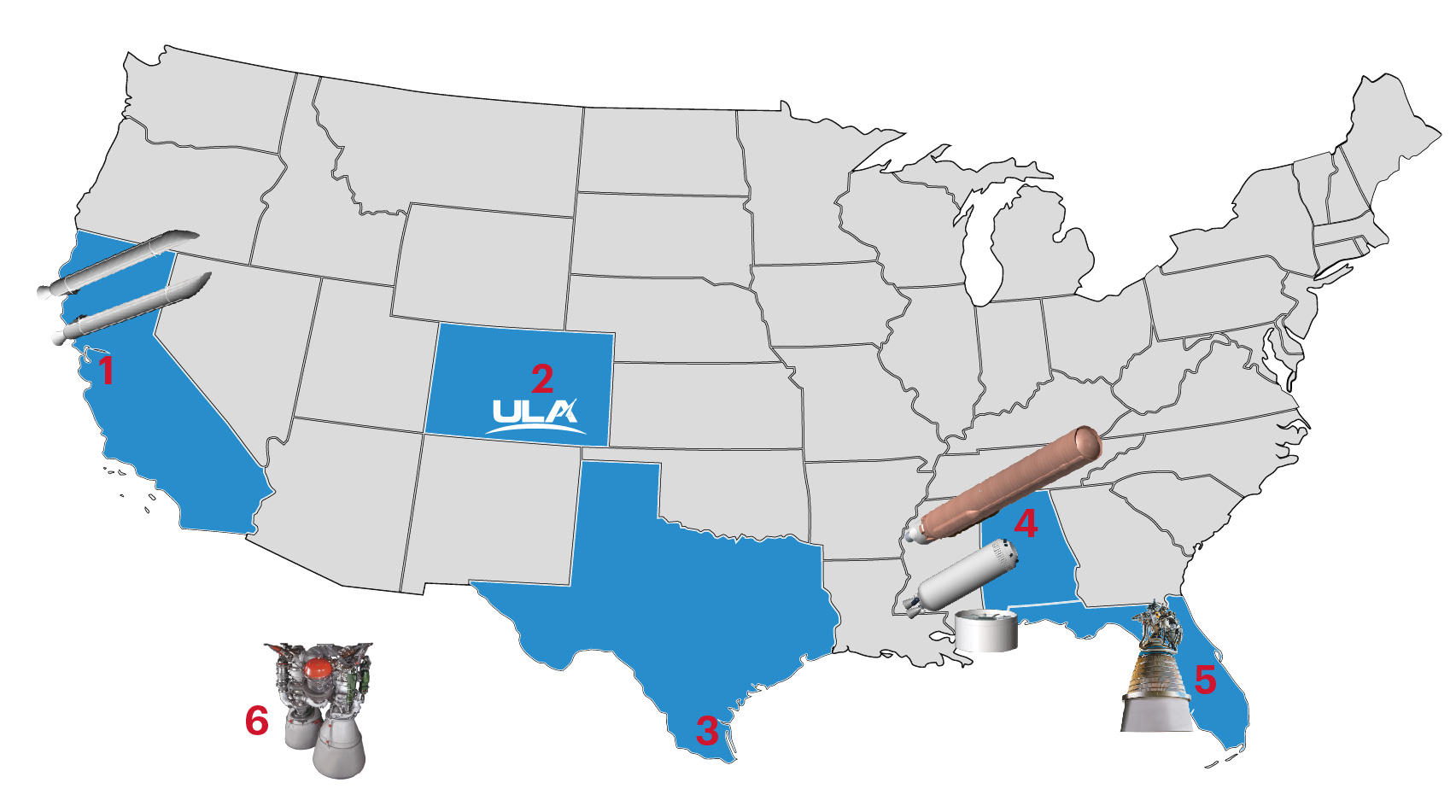
1. Sacramento, CA
Solid Rocket Booster Fabrication
at Aerojet Rocketdyne
2. Denver, CO
ULA Headquarters &
Design Center Engineering
3. Harlingen, TX
Booster Adapter & Centaur
Adapter Fabrication
4. Decatur, AL
Booster Fabrication & Final
Assembly, Centaur Tank
Fabrication & Centaur Final
Assembly, Aeroskirt Fabrication
5. West Palm Beach, FL
RL10A-4-2 Engine Fabrication
at Aerojet Rocketdyne
6. Khimki, Russia
RD-180 Engine Fabrication at
NPO Energomash


